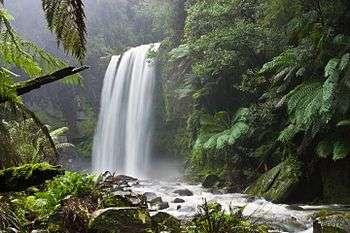Conservation of fungi
Fungi are considered to be in urgent need of conservation by the British Mycological Society on the grounds that it is a traditionally neglected taxon which has legal protection in few countries.[1] Current threats to fungi include destruction of forests worldwide, fragmentation of habitat, changes in land use, pollution, anthropogenic climate change, and over-exploitation of commercially attractive species.[1]
The Species Survival Commission of the IUCN has five specialist groups dealing with the conservation of fungi:[2]
- Chytrid, Zygomycete, Downy Mildew and Slime Mold Specialist Group
- Cup-fungus, Truffle and Ally Specialist Group
- Lichen Specialist Group
- Mushroom, Bracket and Puffball Specialist Group
- Rust and Smut Specialist Group
Lack of knowledge is considered a major concern with a general paucity of comprehensive checklists, even for developed nations. In addition, the criteria for "red-listing" is not specifically designed for fungi and the kinds of data required, viz. population size, lifespan, spatial distribution and population dynamics are poorly known for most fungi. As a result, in practice, indicator species are identified as target foci for the conservation of threatened fungi.[3]
See also
- Fungi by conservation status
References
- Régis (2 July 2001). "Current trends and perspectives for the global conservation of fungi". In Moore, David. (ed.). Fungal conservation: issues and solutions : a special volume of the British Mycological Society. Cambridge University Press. pp. 8–9. ISBN 978-0-521-80363-2. Retrieved 10 July 2011.
- Unattributed (September 17, 2010). "IUCN - Fungi". Species Survival Commission. Retrieved 10 July 2011.
- Jacob; Jan (2008). "Conservation:selection criteria and approaches". In Boddy, Lynne; Frankland, Juliet C.; West, Pieter (eds.). Ecology of saprotrophic basidiomycetes. British Mycological Society & Academic Press. pp. 325–347. ISBN 978-0-12-374185-1. Retrieved 10 July 2011.
